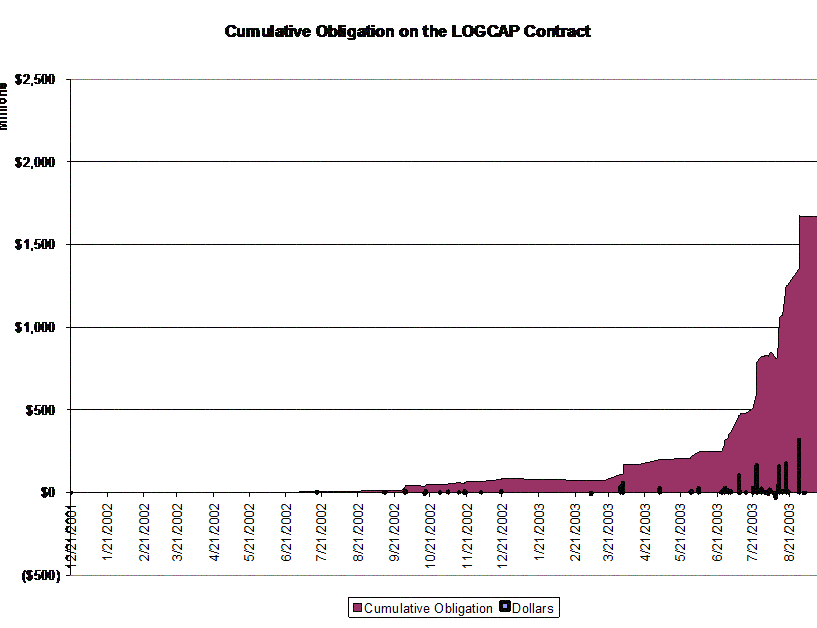I still get searches every now and then for information about the Halliburton contract in Iraq. Curious, I turned one of the searches I have seen recently, for the contract number itself (DAAA09-02-D-0007), back out to Google to see what I could find.
The results are interesting. First, some of the actual contract language, Section H (the “Special Contract Requirements” of the contract) is on the web at the Army Materiel Command (Google cache) in Microsoft Word format. The interesting thing is that some of the revision marks were left in. Of particular interest is Section H.36, which discusses the award fee for the contract. It discloses that the contract is a Cost Plus Award Fee type contract, which allows the government to vary the total value of the contract according to the government’s evaluation of the contractor’s performance. It also discloses the evaluation criteria (H.36(g)), which include Technical Performance, Cost Performance, and Management. It is tempting to view one interesting revision in this area, which shows that originally the contract evaluation criteria read “Delivery, Quality of Performance, and Cost,” as evidence of some evildoing, but the detailed table of performance criteria definitions at H.36(m) includes all these factors in some respect or another.
At the same site is a PowerPoint presentation from the Army Materiel Command’s contracting conference this year. It includes discussion of the Halliburton contract, also called LOGCAP, and discloses some more information about the contract. As of the July conference, 62 task orders had been issued against the contract, including 11 for Operation Enduring Freedom (Afghanistan) and 32 for Operation Iraqi Freedom, for a total value of $1.095 billion (obligated), $3.2 billion (estimated). Yes, folks, that’s billion with a B.
So how does that break out? Glad you asked. The last really good links were from another Army site that included a summary of DD350 reports on the LOGCAP contract and others. There are two summary files on the site. One, a raw text file (Google cache), is a little difficult to read (FY03 data here). The other, in HTML format with column headers (Google cache), is much cleaner and provides detailed information about task orders and modifications issued against the contract in FY02 (through the end of September 2002) and FY03.
What’s the bottom line? Well, knowing where the spending was in July, at $1.095 billion, it’s interesting to compare this to the number at the end of September. At that point, according to the DD350 records, about $1.98 billion had been obligated, almost twice the amount that was obligated only two and a half months earlier. What happened?
We know what happened: Iraq started getting ugly. Take a look at the total spend on the contract to date, and look at the spike up that started happening in June and July. Then look at the big orders that followed in August. Even with a flurry of modifications at the end of September that de-obligated a total of almost $225 million, the total contract amount still mushroomed.
(The preceding graph is drawn from the Excel file linked here, which summarizes the relevant data from the DD350 reports above.)
Suddenly the timing of the president’s decision to ask Congress for $87 billion makes sense. On September 7, when he asked for the money, the total obligated value on the contract had already risen to almost $1.7 billion.
Suddenly, also, things like the struggle about oversight on Iraq spending seem much more important.

